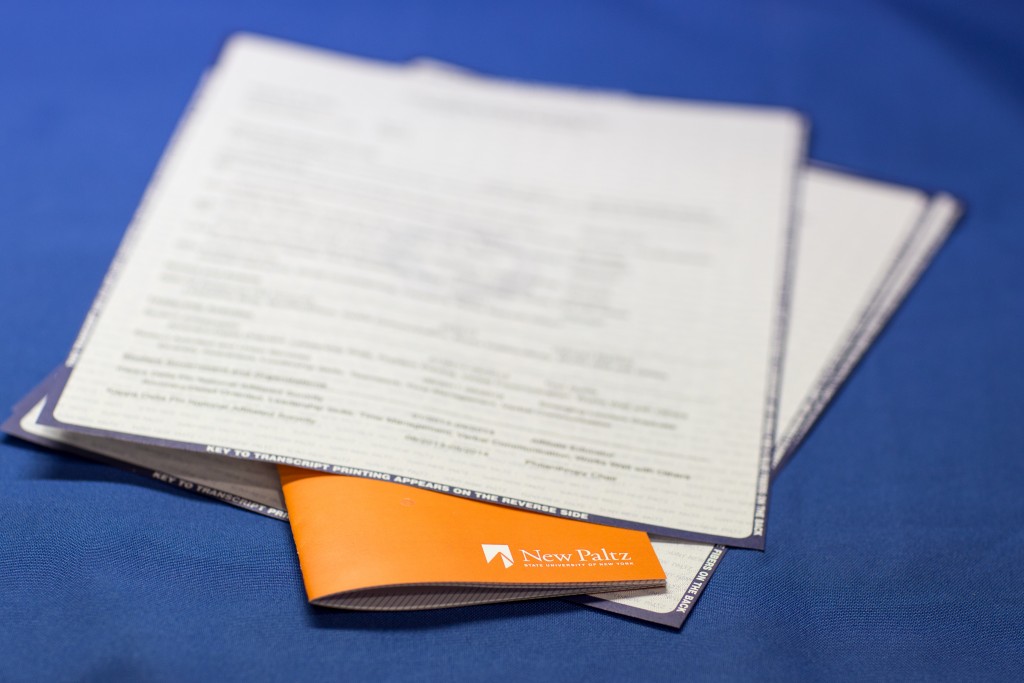 The SUNY New Paltz Co-Curricular Transcript is being recognized as a leader in helping students communicate to prospective employers the skills and experiences they gain outside the classroom.
The SUNY New Paltz Co-Curricular Transcript is being recognized as a leader in helping students communicate to prospective employers the skills and experiences they gain outside the classroom.
The Co-Curricular Transcript is an official document issued by the Office of the Registrar that allows students to track their involvement with student clubs and committees, independent research, academic honors, community service and performances using an easy-to-use online form. It highlights the kinds of skills students develop in these experiences and affirms them with an official “stamp of approval.”
“We often talk about how learning in class should be complemented by the things you’re involved with outside,” said Linda Eaton, associate vice president for Student Affairs. “But simply having these things on a résumé doesn’t always mean a whole lot to prospective employers. The Co-Curricular Transcript helps solve that problem by validating and communicating the value of those experiences.”
The Co-Curricular Transcript program, developed through a collaborative partnership between Student Activities and Union Services, the Career Resource Center, and Records and Registration, was recently featured as an American Association of State Colleges & Universities (AASCU) Innovation and in a SUNY Campus Life Blog post on the rise of similar programs across the SUNY System.
For New Paltz students, the benefits offered by the Co-Curricular Transcript have never been easier to take advantage of. All incoming students are automatically enrolled in the program and can access their co-curricular records by logging in to my.newpaltz.edu. From there students may select from more than 200 types of experiences, each of which has been formally registered by a faculty or staff member.
Eaton said that while registering co-curricular experiences is important, the Co-Curricular Transcript at New Paltz is set apart by its emphasis on linking those experiences to highly sought-after professional skills, like fiscal management, diversity awareness, problem solving and critical thinking.
“If students want to broaden their skillsets, they can even use the Co-Curricular Transcript as a search tool,” Eaton said. “They can enter the skill they’re interested in developing, and the program can return all of the available experiences that are associated with that skill.”
Once submitted, individual Co-Curricular Transcript entries are forwarded to the campus employee who can verify them. This verification process is vital to the Co-Curricular Transcript initiative, as it allows the College to lend its official seal to the final document, strengthening the Transcript’s efficacy as a tool for job seekers.
Brittany Noble ’15 (Early Childhood & Child Education B-6) ‘16g (Literacy Education and Child Special Education), is a current graduate assistant for programming in Student Activities who learned about the Co-Curricular Transcript as an undergraduate participant in the Emerging Leaders program.
“I started actively updating my Co-Curricular Transcript, and thought it was easy,” Noble said. “It was really helpful in terms of keeping track of things I was doing, but it also helped me to see what transferable skills I was developing. That was especially valuable later on, when I used the Co-Curricular Transcript as a model to help me build my résumé. I advise all the students I’m working with now to use the Co-Curricular Transcript and to get started early on.”
More information about the Co-Curricular Transcript is available online.

